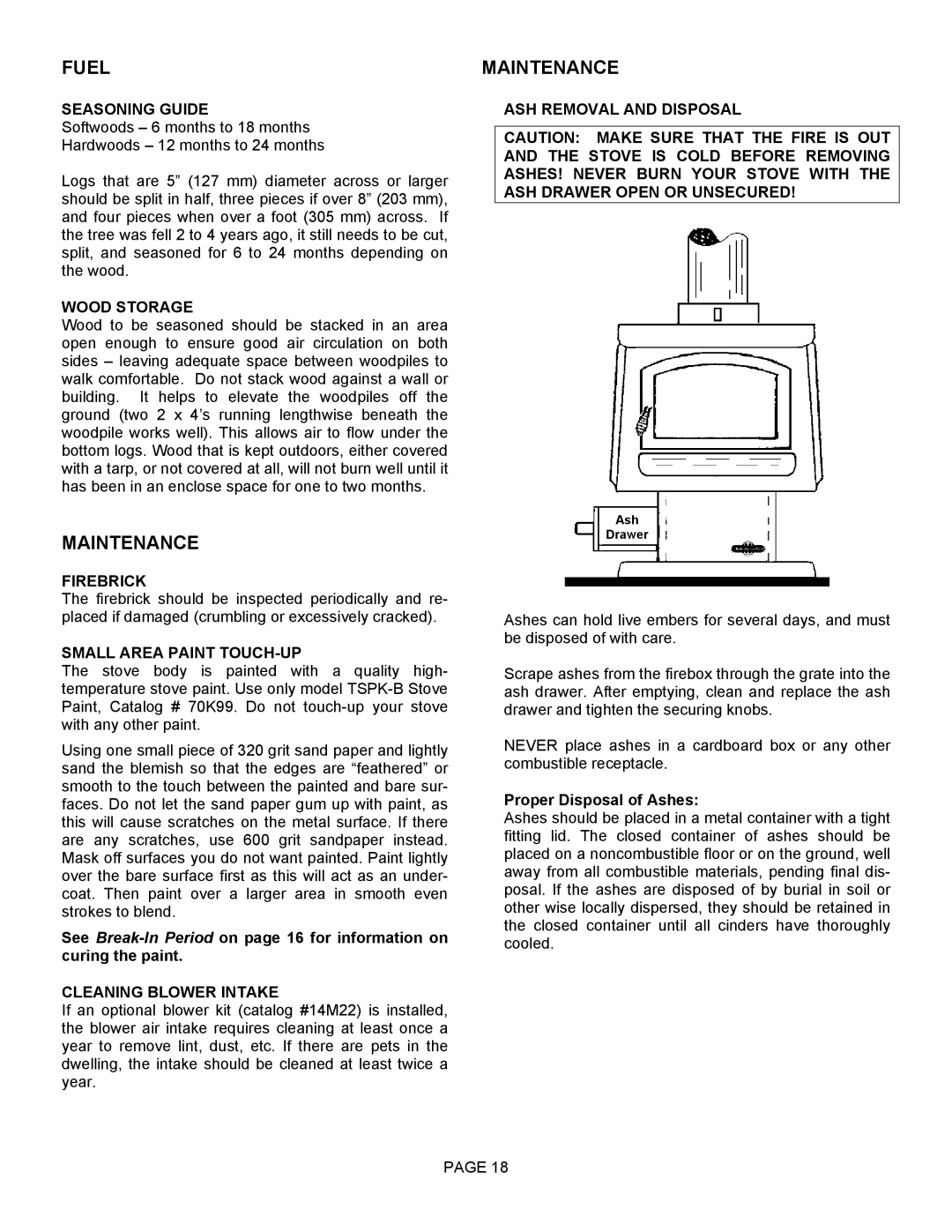
FUEL
SEASONING GUIDE
Softwoods – 6 months to 18 months
Hardwoods – 12 months to 24 months
Logs that are 5” (127 mm) diameter across or larger should be split in half, three pieces if over 8” (203 mm), and four pieces when over a foot (305 mm) across. If the tree was fell 2 to 4 years ago, it still needs to be cut, split, and seasoned for 6 to 24 months depending on the wood.
WOOD STORAGE
Wood to be seasoned should be stacked in an area open enough to ensure good air circulation on both sides – leaving adequate space between woodpiles to walk comfortable. Do not stack wood against a wall or building. It helps to elevate the woodpiles off the ground (two 2 x 4’s running lengthwise beneath the woodpile works well). This allows air to flow under the bottom logs. Wood that is kept outdoors, either covered with a tarp, or not covered at all, will not burn well until it has been in an enclose space for one to two months.
MAINTENANCE
FIREBRICK
The firebrick should be inspected periodically and re- placed if damaged (crumbling or excessively cracked).
SMALL AREA PAINT TOUCH-UP
The stove body is painted with a quality high- temperature stove paint. Use only model
Using one small piece of 320 grit sand paper and lightly sand the blemish so that the edges are “feathered” or smooth to the touch between the painted and bare sur- faces. Do not let the sand paper gum up with paint, as this will cause scratches on the metal surface. If there are any scratches, use 600 grit sandpaper instead. Mask off surfaces you do not want painted. Paint lightly over the bare surface first as this will act as an under- coat. Then paint over a larger area in smooth even strokes to blend.
See
CLEANING BLOWER INTAKE
If an optional blower kit (catalog #14M22) is installed, the blower air intake requires cleaning at least once a year to remove lint, dust, etc. If there are pets in the dwelling, the intake should be cleaned at least twice a year.
MAINTENANCE
ASH REMOVAL AND DISPOSAL
CAUTION: MAKE SURE THAT THE FIRE IS OUT AND THE STOVE IS COLD BEFORE REMOVING ASHES! NEVER BURN YOUR STOVE WITH THE ASH DRAWER OPEN OR UNSECURED!
Ash
Drawer
Ashes can hold live embers for several days, and must be disposed of with care.
Scrape ashes from the firebox through the grate into the ash drawer. After emptying, clean and replace the ash drawer and tighten the securing knobs.
NEVER place ashes in a cardboard box or any other combustible receptacle.
Proper Disposal of Ashes:
Ashes should be placed in a metal container with a tight fitting lid. The closed container of ashes should be placed on a noncombustible floor or on the ground, well away from all combustible materials, pending final dis- posal. If the ashes are disposed of by burial in soil or other wise locally dispersed, they should be retained in the closed container until all cinders have thoroughly cooled.
PAGE 18
